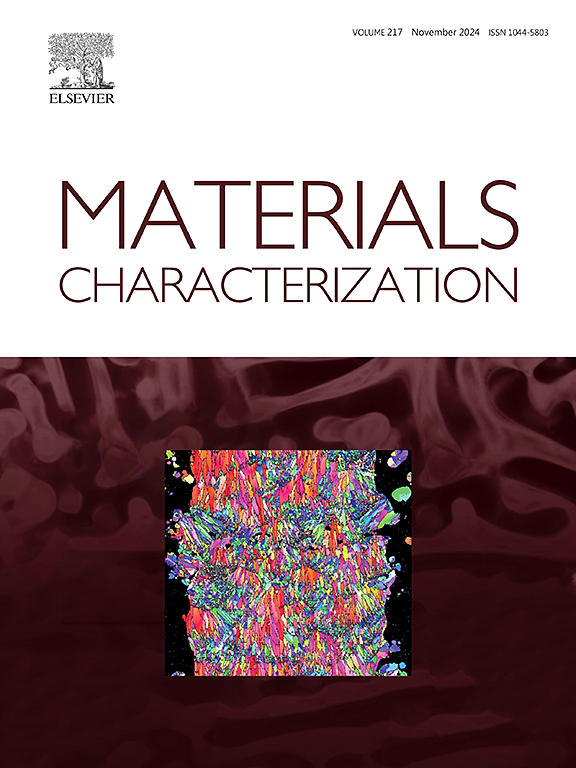Synergistic enhancement of high-temperature oxidation resistance in lightweight AlFeCrMnTi high-entropy alloy via BCC phase and L21 nano-coherent precipitates
IF 4.8
2区 材料科学
Q1 MATERIALS SCIENCE, CHARACTERIZATION & TESTING
引用次数: 0
Abstract
This study investigates the high-temperature oxidation behavior of a lightweight, non-equiatomic AlFeCrMnTi high-entropy alloy (LWHEA) with a density of 6.29 g/cm3. The alloy exhibits a dual-phase microstructure consisting of a Cr- and Mn-rich BCC matrix and L2₁(Fe2AlTi) nano-precipitates. High-temperature cyclic oxidation tests at 700 °C, 800 °C, and 900 °C reveal superior oxidation resistance, with parabolic rate constants of 2.10 × 10−8 mg2·cm−4·s−1 and 1.02 × 10−7 cm−4·cm cm−4·s−1 at 700 °C and 800 °C, respectively. At 900 °C, the oxidation rate increases due to the formation of MnO2 impurities, which compromise the protective Al2O3 oxide layer. The exceptional oxidation resistance at lower temperatures is attributed to the synergistic interaction between the BCC phase and L2₁ precipitates, which promote the formation of a dense and continuous Al2O3 film. This work provides a comprehensive model for enhancing oxidation resistance in lightweight high-entropy alloys through microstructure optimization, offering significant economic and performance benefits for high-temperature applications.
求助全文
约1分钟内获得全文
求助全文
来源期刊

Materials Characterization
工程技术-材料科学:表征与测试
CiteScore
7.60
自引率
8.50%
发文量
746
审稿时长
36 days
期刊介绍:
Materials Characterization features original articles and state-of-the-art reviews on theoretical and practical aspects of the structure and behaviour of materials.
The Journal focuses on all characterization techniques, including all forms of microscopy (light, electron, acoustic, etc.,) and analysis (especially microanalysis and surface analytical techniques). Developments in both this wide range of techniques and their application to the quantification of the microstructure of materials are essential facets of the Journal.
The Journal provides the Materials Scientist/Engineer with up-to-date information on many types of materials with an underlying theme of explaining the behavior of materials using novel approaches. Materials covered by the journal include:
Metals & Alloys
Ceramics
Nanomaterials
Biomedical materials
Optical materials
Composites
Natural Materials.
 求助内容:
求助内容: 应助结果提醒方式:
应助结果提醒方式:


